Discover Just Grow Something | Evidence-Based Home Gardening
Just Grow Something | Evidence-Based Home Gardening

Just Grow Something | Evidence-Based Home Gardening
Author: Karin Velez
Subscribed: 116Played: 4,493Subscribe
Share
© Karin Velez
Description
Grow a better vegetable garden, whether you're a seasoned gardener or have never grown a thing in your life. Karin helps home gardeners learn to grow their own food using evidence-based techniques and research. She talks all about specific plants, pests, diseases, soil and plant health, mulch, garden planning, and more. It's not just the "how" but also the "why" that makes us better. The goal? For everyone to know how to grow their own food no matter what sized space they have or their experience level.
Tune in each week to plan, learn, and grow with your friend in the garden, Karin Velez.
Tune in each week to plan, learn, and grow with your friend in the garden, Karin Velez.
321 Episodes
Reverse
If you’ve ever had that one magical week where the garden is giving you exactly what you want - some lettuce, a few carrots, a handful of beans, a couple tomatoes - and then two weeks later you’re drowning in zucchini while everything else is kind of between harvests ...Today we’re fixing that.Because the goal for a lot of home gardeners isn’t “the biggest harvest possible on one weekend.” The goal is steady, usable harvests week after week so you’re actually eating from the garden regularly, without a sudden produce avalanche.So today on Just Grow Something, I’m going to teach you a planning method that revolves around harvest windows.Instead of only asking, “When do I plant this?” we’re going to ask:“When do I want to be harvesting this, and do I want it over and over again?”I’ll walk you through a simple framework and give you a few practical “rules of thumb” for how often certain crops can be re-planted or staggered to keep the harvest going.Let's dig in!References and Resources:My Plan Like A Pro Course is Open for Registration: https://justgrowsomethingpodcast.com/proUniversity of Missouri Extension — “Harvest all season long with succession sowing” : https://extension.missouri.edu/news/harvest-all-season-long-with-succession-sowingUniversity of Minnesota Extension — “Climate resilience resources for vegetable growers in Minnesota” (includes a “when to plant for continuous harvest” interval table): https://extension.umn.edu/vegetables/climate-resilience-resources-vegetable-growers-minnesota#strategy-3%3A-reduce-risks-from-warmer-and-drier-conditions-3571512NC State Extension — Extension Gardener Handbook, Chapter 16 “Vegetable Gardening” (Succession planting: varieties with different maturity, repeat plantings, and filling in after harvest): https://content.ces.ncsu.edu/extension-gardener-handbook/16-vegetable-gardening
If you’ve ever stared at a seed catalog in January and thought, “I want all of it,” and then somehow ended up with a garden that felt chaotic by mid-summer, today’s episode is for you.Because most “garden planning” advice starts with the fun part—varieties, colors, wish lists—and then we wonder why the plan falls apart when real life shows up.So today on Just Grow Something, we’re going to flip the order.I’m going to give you four questions that can lead you to an actual usable plan. These questions help you decide what to grow, where it goes, when it happens, and how to keep the plan realistic for the space and time you actually have.And the best part is you can use these four questions whether you garden in a single planter, a few raised beds, or a bigger in-ground plot.Let's dig in!References and Resources:My Plan Like A Pro Course is Open for Registration: https://justgrowsomethingpodcast.com/proHow to Plan Your Raised Bed Garden, Ep. 269: https://justgrowsomethingpodcast.com/episode/how-to-plan-a-raised-bed-garden-ep-269Seven Steps to Planning Your Entire Garden Year - Ep. 234: https://justgrowsomethingpodcast.com/episode/7-steps-to-planning-your-entire-garden-year-ep-234Virginia Cooperative Extension (2025). “Planning the Vegetable Garden.” VCE Publications: https://www.pubs.ext.vt.edu/426/426-312/426-312.htmlWashington State University Extension (2015). “Crop Rotation in Home Gardens” (PDF): https://s3.wp.wsu.edu/uploads/sites/2070/2015/08/Crop-Rotation-in-Home-Gardens.pdfPenn State Extension (2023). “Keeping a Garden Journal.”: https://extension.psu.edu/keeping-a-garden-journal/Just Grow Something: https://justgrowsomething.comJust Grow Something Merch and Downloads: https://justgrowsomething.com/shopJust Grow Something Gardening Friends Facebook Group: https://www.facebook.com/share/g/18YgHveF5P/ Check out how you can become a patron on Patreon: https://www.patreon.com/JustGrowSomethingBonus content for supporters of the Podcast: https://buymeacoffee.com/justgrowsomethingAmazon storefront: https://www.amazon.com/shop/justgrowsomething
We’ve reached the end of another gardening year. Maybe your garden was spectacular. Maybe it was just so-so. Maybe it was an absolute disaster in certain beds and you’re still a little salty about the squash vine borers.However it went, this is a powerful moment in the gardening calendar.Today we’re going to slow down and talk about taking time to reflect on the past season, reset your expectations, and reimagine what you want from your garden next year.Extension programs and planning guides consistently recommend end-of-season evaluation, note-taking, and mapping as key pieces of long-term garden success. Research on goal-setting shows that specific, challenging, and meaningful goals help people follow through and actually change their behavior. So, in this final episode of the year, we’re going to weave those two ideas together:1. Why the end of the year is the best time to reflect on your garden2. What goal-setting research can teach us about making better garden goals3. Turning reflection into 3–5 clear, realistic goals for next year4. A healthier mindset for handling “failures” and unexpected seasonsBy the end, you’ll have a framework to close the book on this year’s garden and open a new one with intention.Let’s dig in.References and Resources:Iowa State University Extension – Yard and Garden. “Garden Journaling.”: https://yardandgarden.extension.iastate.edu/how-to/garden-journalingLocke, E. A., & Latham, G. P. “Building a Practically Useful Theory of Goal Setting and Task Motivation.” American Psychologist, 2002: https://pubmed.ncbi.nlm.nih.gov/12237980/Just Grow Something: https://justgrowsomething.comJust Grow Something Merch andDownloads: https://justgrowsomething.com/shopJust Grow Something Gardening Friends Facebook Group:https://www.facebook.com/share/g/18YgHveF5P/Check out how you can become a patron on Patreon: https://www.patreon.com/JustGrowSomethingBonus content for supporters of the Podcast: https://buymeacoffee.com/justgrowsomethingAmazon storefront: https://www.amazon.com/shop/justgrowsomething
Seed catalog season is fun, but it can also be overwhelming. If you’ve ever ordered way more seed than you can possibly plant, chosen a variety that just did not perform in your climate, or gotten confused by all the codes, abbreviations, and marketing language this episode is for you.Today on Just Grow Something we’re going to talk about how to read a seed catalog.We’ll cover:1. Why seed catalogs are tools, not just wish books2. The key pieces of information in a catalog listing (and what they actually mean)3. Days to maturity, and why that number is not as simple as it looks... and moreBy the end, you’ll be able to flip through a catalog and quickly decide, “Yes, this variety makes sense for my garden” or “Nope, that’s just clever marketing” and make a wish list that can actually be fulfilled.Let’s dig in.Resources:1. Washington State University Extension. Tips to Making Strategic Vegetable Seed Selections (EM057E), 2025: https://wpcdn.web.wsu.edu/wp-extension/uploads/sites/2073/2025/01/Vegetable-Seed-Selection.pdf2. Oregon State University Extension. “How to Read Seed Packets Before You Buy.”: https://extension.oregonstate.edu/news/how-read-seed-packets-you-buyJust Grow Something: https://justgrowsomething.comJust Grow Something Merch and Downloads: https://justgrowsomething.com/shopJust Grow Something Gardening Friends Facebook Group: https://www.facebook.com/share/g/18YgHveF5P/ Check out how you can become a patron on Patreon: https://www.patreon.com/JustGrowSomethingBonus content for supporters of the Podcast: https://buymeacoffee.com/justgrowsomethingAmazon storefront: https://www.amazon.com/shop/justgrowsomething
Winter sowing is a seed-starting method that sounds a little bit wild the first time you hear it but makes sense if you think about it from a horticultural standpoint. Basically you are sowing seeds in recycled containers like milk jugs and placing them outside in the winter as a very hands-off way of starting your spring garden.If you’ve ever:• Run out of space under grow lights• Been frustrated by leggy indoor seedlings• Or just felt like you don’t have the time or money or inclination for a full seed-starting setup…winter sowing might be your new favorite technique.Let's dig in!References and Resources:University of Missouri Extension. Winter Sowing Seeds (YM105), 2021. https://extension.missouri.edu/publications/ym105Rutgers NJAES Cooperative Extension. “Winter Seed Sowing Handout.” 2023. https://ocean.njaes.rutgers.edu/wp-content/uploads/2024/01/Winter-Seed-Sowing-Handout-Final.pdfJust Grow Something: https://justgrowsomething.comJust Grow Something Merch and Downloads: https://justgrowsomething.com/shopJust Grow Something Gardening Friends Facebook Group: https://www.facebook.com/share/g/18YgHveF5P/ Check out how you can become a patron on Patreon: https://www.patreon.com/JustGrowSomethingBonus content for supporters of the Podcast: https://buymeacoffee.com/justgrowsomethingAmazon storefront: https://www.amazon.com/shop/justgrowsomething
When the garden beds are frozen, the days are short, and you’re staring at bags of store-bought salad mix, it can feel like fresh homegrown food is a long way off. But it doesn’t have to be.Today on Just Grow Something we’re talking about growing herbs and leafy greens indoors in winter—on a windowsill, under a simple grow light, or with one of those countertop indoor garden systemsIf you’ve ever thought:• “I’d love fresh basil in January.”• “My house is too dark to grow anything.”• Or, “Are those indoor garden gadgets actually worth it?”This episode is for you. Let's dig in.References and Resources:How Do We Measure Light: https://gardeningsolutions.ifas.ufl.edu/plants/houseplants/light-for-houseplants/University of Minnesota Extension. “Growing Herbs Inside is Easy and Healthy.” 2022. https://extension.umn.edu/news/growing-herbs-inside-easy-and-healthyPenn State Extension. “A Step-By-Step Guide for Growing Microgreens at Home.” 2023. https://extension.psu.edu/a-step-by-step-guide-for-growing-microgreens-at-homeJust Grow Something: https://justgrowsomething.comJust Grow Something Merch and Downloads: https://justgrowsomething.com/shopJust Grow Something Gardening Friends Facebook Group: https://www.facebook.com/share/g/18YgHveF5P/ Check out how you can become a patron on Patreon: https://www.patreon.com/JustGrowSomethingBonus content for supporters of the Podcast: https://buymeacoffee.com/justgrowsomethingAmazon storefront: https://www.amazon.com/shop/justgrowsomething
Prepare for seed season with practical tips on reviewing your garden's performance, taking seed inventory, and ordering smarter for a more successful growing year.Today on Just Grow Something we walk through the essential steps to get ready for seed season: how to reflect on what worked (and didn't) in your garden, take a proper seed inventory, and create a more intentional seed order when the flood of catalogs leads to plant-filled daydreams. Whether you're planning next year's layout or just trying to avoid overbuying, this episode gives you the tools to start strong. Let's dig in!References and Resources:Downloadable chart for what each plant yields on average: https://justgrowsomethingpodcast.com/yieldOrdering seeds from garden catalogs | Over the Garden Fence | Illinois Extension | UIUC: https://extension.illinois.edu/blogs/over-garden-fence/2021-01-04-ordering-seeds-garden-catalogsSeed Storage Protocols : USDA ARS: https://www.ars.usda.gov/plains-area/fort-collins-co/center-for-agricultural-resources-research/paagrpru/docs/seed-program/seed-storage-protocols/Just Grow Something: https://justgrowsomething.comJust Grow Something Merch and Downloads: https://justgrowsomething.com/shopJust Grow Something Gardening Friends Facebook Group: https://www.facebook.com/share/g/18YgHveF5P/ Check out how you can become a patron on Patreon: https://www.patreon.com/JustGrowSomethingBonus content for supporters of the Podcast: https://buymeacoffee.com/justgrowsomethingAmazon storefront: https://www.amazon.com/shop/justgrowsomething
Today we’re talking about one of my least favorite but probably most important fall garden rituals: the great garden clean-up. This is the part of the year where we get to close one chapter of the garden season and start quietly writing the next chapter.Now that most of the chaos of the garden is done, it's time to be putting things in order, protecting the soil, and setting yourself up for success next spring.So, today on Just Grow Something we’re talking about:• What to remove and what to leave in your garden beds• How to handle diseased or pest-infested plant material• Best practices for soil testing, amending, and protecting your beds over winter• And a few tips for the gardeners who have really just had it for now and don’t want to completely clear everything out in this moment. Because I feel you.Let’s dig in!Resources:How to Amend the Soil in Fall for a Better Garden in Spring - Ep. 222: https://justgrowsomethingpodcast.com/episode/how-to-amend-the-soil-in-fall-for-a-better-garden-in-spring-ep-222Getting Started with Cover Crops - Ep. 166: https://justgrowsomethingpodcast.com/episode/getting-started-with-cover-crops-ep-166Just Grow Something Merch and Downloads: https://justgrowsomething.com/shopJust Grow Something Gardening Friends Facebook Group: https://www.facebook.com/share/g/18YgHveF5P/ Check out how you can become a patron on Patreon: https://www.patreon.com/JustGrowSomethingBonus content for supporters of the Podcast: https://buymeacoffee.com/justgrowsomethingAmazon storefront: https://www.amazon.com/shop/justgrowsomething
The frost has settled, most of the garden has gone to sleep, and now we’re turning our attention to what’s left — the fruits (and roots) of our labor.I’m talking about how to store and preserve that late-season harvest, so all your hard work continues to pay off well into winter.Today on Just Grow Something We’ll look at how long certain crops can remain in the garden, essentially in storage mode before you truly have to bring them inside, best practices for storing roots and late fall greens, and preservation options that retain nutrition and flavor.Let’s dig in!Resources:Preparing to Preserve: Basic Canning Supplies for Beginners - Ep. 211: https://justgrowsomethingpodcast.com/episode/preparing-to-preserve-basic-canning-supplies-for-beginners-ep-211Ep. 109 - Preserving, Part One: Freezing: https://justgrowsomethingpodcast.com/episode/ep-109-preserving-part-one-freezingEp. 110 - Preserving Basics, Part Two: Water-Bath Canning: https://justgrowsomethingpodcast.com/episode/ep-110-preserving-basics-part-two-water-bath-canningEp. 111 - Preserving Basics, Part Three: Pressure Canning: https://justgrowsomethingpodcast.com/episode/ep-111-preserving-basics-part-three-pressure-canningEp. 113 – Dehydrating, Cold Storage, and Fermenting: More Ways to Store Your Harvest: https://justgrowsomethingpodcast.com/episode/ep-113-dehydrating-cold-storage-and-fermenting-more-ways-to-store-your-harvestGetting Started in Fermenting - Ep. 160: https://justgrowsomethingpodcast.com/episode/getting-started-in-fermenting-ep-160National Center for Home Food Preservation: https://nchfp.uga.edu/Get my weekly newsletter: https://justgrowsomethingpodcast.com/news
If your forecast is flirting with frost and you still have all those lovely greens and root veggies out there, don’t panic, prepare.Today on Just Grow Something we’re talking row cover and low tunnels: what to buy, how to set up fast, how to vent so you don’t cook your greens, and exactly which fabrics and plastics can squeeze out one more month of salads, herbs, and even late summer crops like beans or peas.We’ll talk about using fabric covers versus when to use plastic, floating row covers versus building a low tunnel, venting, anchoring, avoiding disease and more. By the end you’ll even have an emergency plan in place if you get a sudden frost warning you weren’t quite prepared for. Let’s dig in!Resources:Landscape fabric staples: https://amzn.to/47ogCKWFrost Cloth: https://amzn.to/47zA5a7Plastic row covers: https://amzn.to/3WCpSF2Get my weekly newsletter here: https://justgrowsomethingpodcast.com/news
Whether you live in a climate that allows for a veery long growing season or you’re like me and need to cram as much growing into a shorter season as possible, cloning is a shortcut to making the most of our best plants. In some cases it even makes sense to overwinter some of those plants so next season starts off weeks ahead of schedule.So, today on Just Grow Something, we’re talking about the importance of cloning plants as a strategic shortcut to enhance gardening productivity. I’ll explain the key differences between cloning and seed saving, and the various methods of cloning, including water propagation and the use of rooting hormones, and the layering method. We’ll also talk about how to overwinter plants effectively and which ones are worth the effort, troubleshooting common issues, and the best practices for maintaining plant health during the winter months. Let’s dig in!Key Takeaways:Cloning allows gardeners to replicate successful plants for the next season.Seed saving can lead to genetic reshuffling, while cloning preserves the exact traits of a plant.Water propagation is an easy method for cloning many herbaceous plants.Rooting hormones can significantly improve the success rate of cloning woody plants.Layering is a method that allows plants to root while still attached to the parent plant.Overwintering can help maintain productive plants for early spring planting.Different plants require different care when overwintering, including light and temperature adjustmentsResources:Download my free cloning guide at https://justgrowsomethingpodcast.com/clone
Now is the time to be getting our garlic, shallots and even onions planted in some places. If you can give me one good hour in the garden this month, you can set yourself up for big flavor next summer.Today on Just Grow Something were going to walk through planting garlic and shallots and some tips on where it’s okay to even plant onion sets for a summer harvest. We’ll talk about when to plant for your location, how to prep the bed, which onions and shallots make sense to plant now, troubleshooting and I'll answer your most frequently asked questions about planting these crops. Let’s dig in.References and ResourcesNewsletter sign up: JustGrowSomethingPodcast.com/newsEpisode 40: Garlic - https://justgrowsomethingpodcast.com/episode/ep-40-growing-garlicEpisode 133: Growing Onions - https://justgrowsomethingpodcast.com/episode/ep-133-growing-onionsEpisode 220 Planting Onions in Fall for a Summer Harvest - https://justgrowsomethingpodcast.com/episode/planting-onions-in-fall-for-a-summer-harvest-ep-220Episode 221 Tips for Planting Garlic by Climate Type - https://justgrowsomethingpodcast.com/episode/garlic-planting-tips-by-climate-ep-221YouTube Video for Fall Planted Onions - https://youtu.be/qVv6AgPCvdISprout Mountain Farm fall planting onions - https://www.sproutmountainfarms.com/category/untreated-onion-sets
Fallen leaves in the garden will blanket the soil, slow weeds, and shelter a whole mini-wildlife community. Many native butterflies, moths, beetles, and even some queen bumble bees ride out winter tucked into leaf litter and hollow stems. When we keep some of that litter in place, we’re giving next spring’s pollinators a head start.That's the idea behind the National Wildlife Federation "Leave the Leaves" campaign. . Each October they put out a campaign to raise awareness around the incredibly valuable habitat for wildlife and nutrients for plants that comes in the form of our yard waste.But what if this season brought a heavy pest infestation to your garden and you don’t want to give those pests a place to shelter? That’s where a targeted cleanup comes in clutch. So, today on Just Grow Something we’re talking about how to leave the leaves strategically. I’ll give you pointers on how to keep the fallen leaf layer in your garden to benefit the bevy of butterflies, beetles, and bumblebees without giving sanctuary to the squash bugs and the scales. Let’s dig in!Resources:Sign up for my newsletter here: https://justgrowsomethingpodcast.com/newsLeave the Leaves Month info: https://www.nwf.org/Native-Plant-Habitats/Join-the-Movement/Seasonal-Initiatives/Leave-the-Leaves-MonthFull transcript and show notes can be found here: https://justgrowsomethingpodcast.com/episode/leave-the-leaves-strategically-ep-271
As I record this, tonight will be a full moon. In fact, it’s the Harvest Supermoon here in the northern hemisphere. And it’s very possible that your online gardening group is absolutely abuzz with advice that tomatoes grow better if you plant them in the days leading up to the full moon and your beets grow more voluptuous if you plant them after the full moon.But does gardening by the moon actually change anything in your garden? I have been asked about gardening by the moon’s phases so many times, so today on Just Grow Something we’re digging into the science—why we think the lunar cycle can affect our garden, what’s been tested, and what hasn’t. And at the end you can decide whether you want to modify your planting calendar next season to include the phases of the moon. Let’s dig in!Planter Box Direct special is still happening! Use code JUSTGROW20 to save 20% and get free shipping at PlanterBoxDirect.com now through October 15th. Missed the deadline? You can still use JUSTGROW10 to save!!References and transcript for this episode can be found at https://justgrowsomethingpodcast.com/episode/planting-by-the-moon-ep-270
For this final episode in our Raised Bed series, we’re talking about how to plan your raised bed garden. If you’ve never grown in a raised bed, there are some nuances to the planning and planting aspect, no matter what material you built the bed from. And if you’re already gardening in raised beds, but it turned into a jungle by July and a desert by August, this episode is also for you!So, today on Just Grow Something we’re mapping out a season-long plan. Learn how to plan a high-yield raised-bed vegetable garden - choose smart spacing for airflow and disease prevention, interplant and succession-plant for nonstop harvests, use mulch to save water and block weeds, and more!So, grab a pencil, a piece of graph paper and a coffee, my gardening friend, we are building a raised-bed garden plan. Let’s dig in!Don't forget you can save 20% and get FREE shipping on your new raised bed from PlanterBoxDirect.com when you use code JUSTGROW20 now through October 15th!Resources:Ep. 265: How Big Should a Raised Bed Be? Square-foot Chart free download: https://preview.mailerlite.io/forms/757286/166825529232590223/shareFor full show notes and transcript, visit https://justgrowsomething.com/episode/how-to-plan-a-raised-bed-garden-ep-269
All this month we've been talking about creating new raised beds, what materials to use, and how to fill them. So, I thought it would be fitting to have on an expert on the subject.Scott Wilson, otherwise known as Gardener Scott on YouTube, has been building and growing in raised beds for two decades and has taught others to do the same as both a Master Gardener and a garden educator. His new book, Gardener Scott's Guide to Raised Bed Gardening, is a step-by-step guide to planning, building and maintaining raised beds.So, today on Just Grow Something, Scott shares his extensive knowledge with us including creating your own soil mix, compost, cost-effective and creative ways to create new raised beds and more. Let's dig in!Get your new raised garden bed from PlanterBoxDirect.com using code JUSTGROW20 and save 20% and get free shipping, now through October 15th!Get Scott's Book here: https://amzn.to/3Kgxw4TFollow Scott on YouTube: Gardener ScottGet the full show notes and transcript at https://justgrowsomethingpodcast.com/episode/raised-bed-gardening-with-gardener-scott-ep-268
This week we tackle one of the biggest questions in raisedbed gardening – how to fill it! It can be daunting, staring at this gaping box, trying to figure out how you’re going to fill 18” or even 36” of depth without going broke.So, today on Just Grow Something, we’re digging into the dirt – literally – on how to fill your new raised bed. We’ll cover the different materials you can use to get your garden bed off to it’s best start for your plant’s sake, but also for your wallet’s sake. And, we’ll talk about the materials you don’t want to use, even if it’s just to fill space in the bottom of a very deep bed, and the alternatives. By the end you’ll have a pretty good idea of where to start and where you’ll end up so your raised bed materials can settle in over the winter and become the beautiful loamy soil you’ll want to plant into in the spring. Let’s dig in!Save 20% and get free shipping on your new raised bed from PlanterBoxDirect.com by using code JUSTGROW20, now until October 15th!For full show notes and transcript head to https:/justgrowsomethingpodcast.com/episode/layer-by-layer-how-to-fill-a-new-raised-bed-ep-267
Thinking about building raised garden beds but not sure what materials to use? Today on Just Grow Something we dig into all the options for raised bed construction, from wood, stone, and galvanized steel to creative choices like reclaimed materials, fabric grow bags, and more. We’ll talk about the pros and cons of each, including cost, durability, aesthetics, and safety concerns like chemical leaching or microplastics. You’ll also learn when (and if) you need a bottom layer to block weeds, stop burrowing critters, or protect your soil. Whether you’re a new gardener or looking to upgrade your existing setup, this episode gives you the science-backed insights you need to choose the right raised bed materials for your garden. Let’s dig in!Perfect for: raised bed gardening, beginner gardeners,vegetable gardening, sustainable gardening, DIY garden beds, pressure-treated wood safety, and backyard food growing.Save 20% and get Free Shipping on your new planter from PlanterBoxDirect.com! Use code JUSTGROW20 now through October 15th, 2025!References:https://extension.oregonstate.edu/gardening/soil-compost/pressure-treated-wood-raised-bed-construction-willamette-valleyhttps://extension.umn.edu/planting-and-growing-guides/raised-bed-gardensFull show notes can be found at https://justgrowsomethingpodcast.com/episode/materials-to-use-for-building-a-new-raised-garden-bed-ep-266
If you are considering adding your first raised bed or yourfiftieth to your garden for next season, now is the time to be doing it. A new raised planter is going to have to be filled and that material is going to have to break down a bit before it can be planted in order to make the nutrients available to your plants. This is NOT something we want to put together at the last minute in the spring just before we start planting.For the entire month of September, I am taking you step-by-step through starting a new raised bed, from deciding the dimensions and layout, what materials to use to build it, what to fill it with and how, all the way to successfully planting those beds with your first crop in the spring.So, today on Just Grow Something, we’re starting with the basics: how to decide what size and depth your raised bed should be and how it can fit into the overall layout and design of your garden. You just might find they are so versatile, you will eliminate your in-ground beds in favor of an entire yard of raised beds, whimsical planters, and neat little walkways. Let’s dig in!NEW! For a limited time, save 20% AND get FREE shipping on my favorite planters from PlanterBoxDirect.com. Just use code JUSTGROW20 before October 15th, 2025!For full show notes, visit https://justgrowsomethingpodcast.com/episode/how-big-should-a-raised-bed-be-ep-265
It's late August, the time of year when the garden can be just as likely to flourish as it is to fizzle out. I know all too well the rollercoaster of emotions we gardeners feel at this point in the season: you're hot, tired, maybe a little bit over it, and those early-season mistakes are showing their faces. But don’t give up!Today on Just Grow Something we dig into the common issues that crop up during these steamy late-summer days, like overwatering, overcrowding, plant pairings gone wrong, and, of course, the power of keeping a garden journal. You’ll get practical advice on fixing, tweaking, and even letting go of certain garden habits so you can set yourself up for a better harvest now and an even more successful season next year. Let’s dig in!Now's the time to save 20% and order your new rose from HeirloomRoses.com! Use code JUSTGROW to save!For complete show notes, visit https://justgrowsomethingpodcast.com/episode/what-to-fix-tweak-or-stop-doing-in-your-garden-late-summer-ep-264









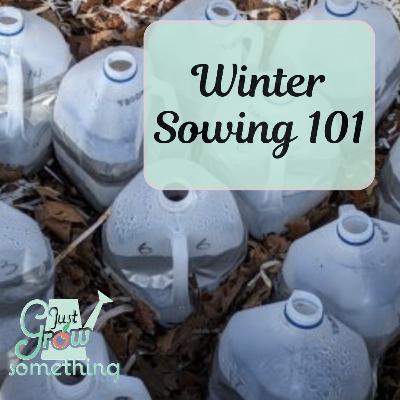
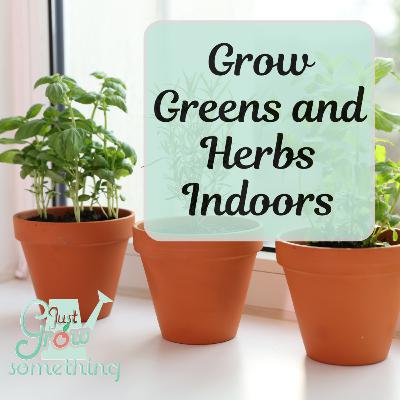
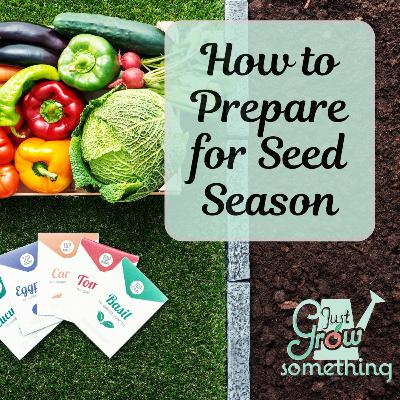
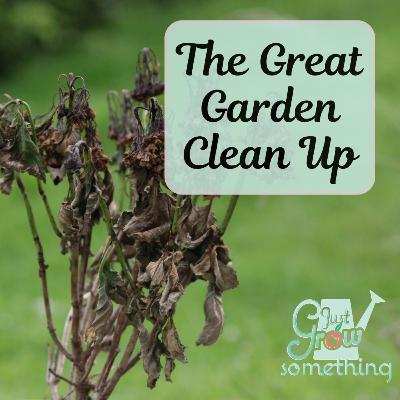
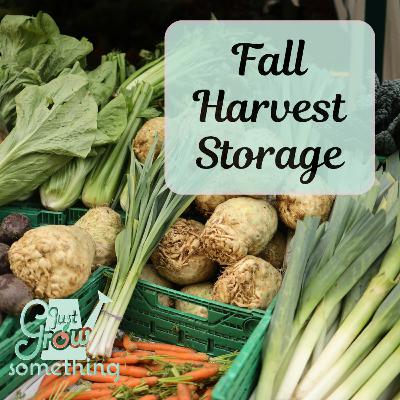

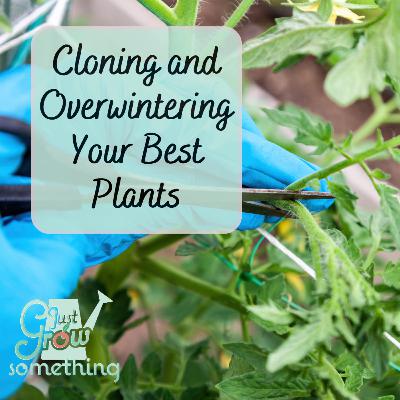
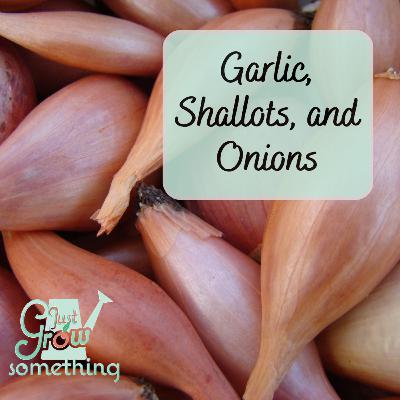
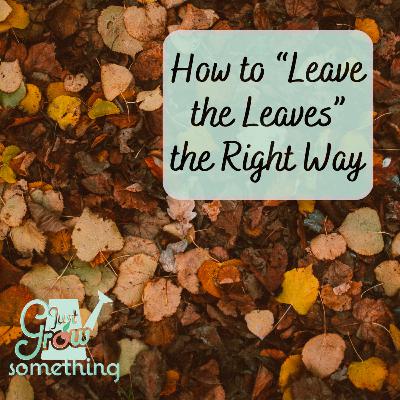
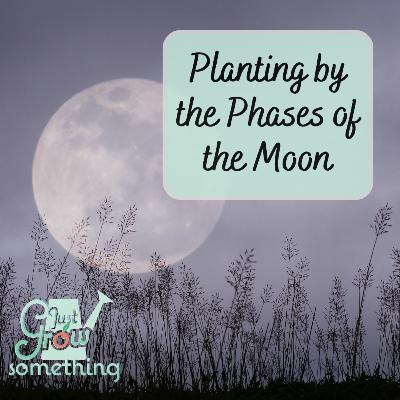
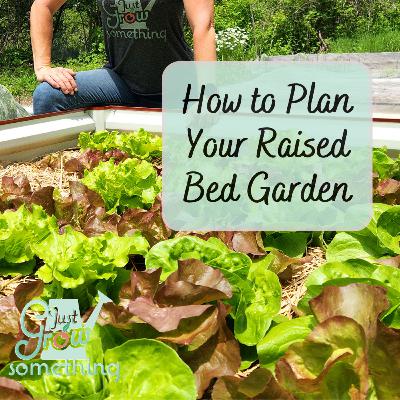
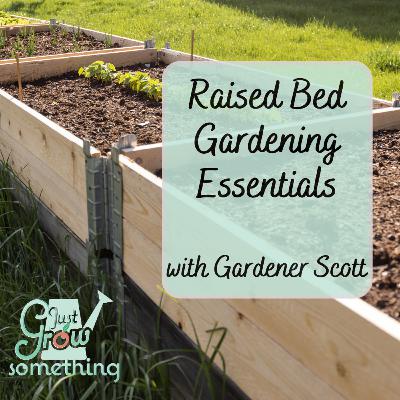
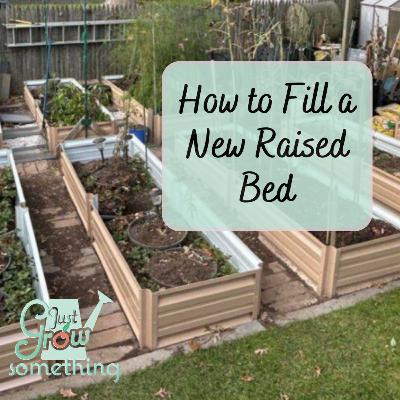
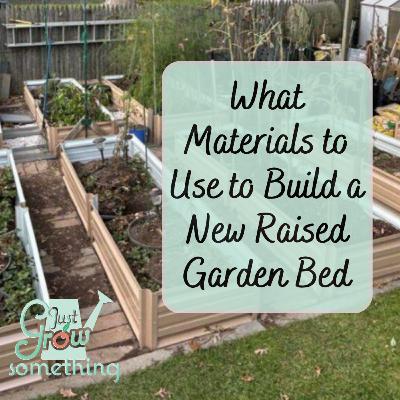
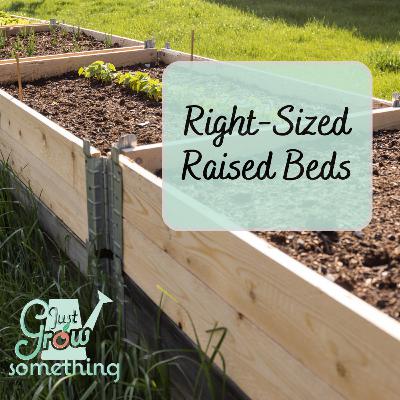
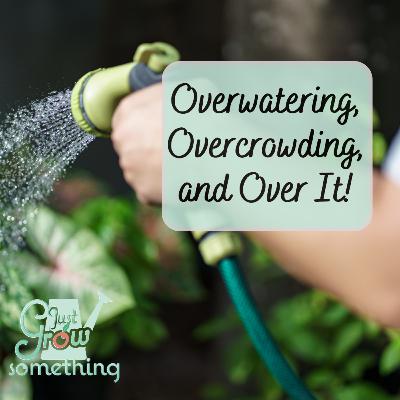



You are providing the top resources. Also like to mention, We provide all kinds of indoor gardening and hydroponics supplies at https://hgshydro.com/
I have learned so much! Thanks for putting out such helpful content.